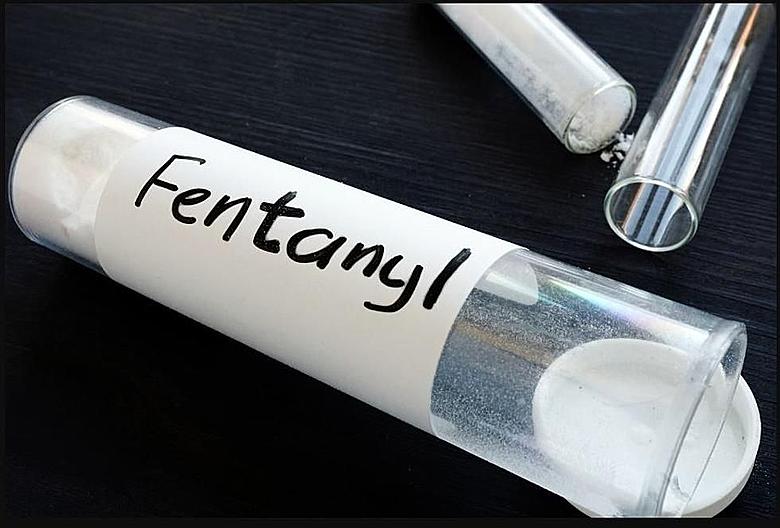Fentanyl, a synthetic opioid with a potency 50 to 100 times greater than morphine, has become a critical factor in the opioid epidemic gripping the United States. The story of its transformation from a medical drug to a lethal street substance is inextricably linked to George Erik Marquardt, a high school dropout whose criminal exploits mirror the fictional Walter White from Breaking Bad. Marquardt’s story is a chilling example of how scientific expertise can be diverted to cause widespread harm.
The Origins of Fentanyl
Fentanyl was first synthesized in 1960 by Dr. Paul Janssen, a Belgian pharmacologist. Janssen developed fentanyl as a powerful anesthetic for use in medical settings, designed to manage severe pain during surgeries and for terminally ill patients. Its extreme potency—ranging from 50 to 100 times more effective than morphine—made it a breakthrough in pain management but also posed significant risks of misuse. In medical settings, fentanyl is administered under strict controls due to its high potential for overdose.
George Marquardt’s Descent into Crime
George Marquardt, born in 1946 in Waukesha, Wisconsin, exhibited a prodigious aptitude for science from a young age. His early life, marked by a stable family environment, seemed promising. Marquardt’s interest in chemistry began with a memorable encounter with Robert Oppenheimer, the physicist known for his role in the Manhattan Project. Marquardt’s youthful enthusiasm led him to pursue scientific knowledge outside formal education, developing skills that would later serve him in criminal endeavors.
Marquardt’s first foray into illegal activities began in the 1960s with the manufacture of LSD. His criminal activities escalated over the years, leading to a significant arrest in 1978 for methamphetamine production. Following this, Marquardt spent time in prison, where he connected with organized crime figures and illicit chemists. This network became instrumental in his later production of fentanyl.
The Emergence of a Lethal Drug
By the late 1980s, Marquardt, now a seasoned drug manufacturer, received backing from organized crime in Boston. He established a laboratory in Wichita, Kansas, where he began experimenting with the fentanyl synthesis process. His goal was to simplify the production of this highly potent drug, which had been synthesized by Dr. Paul Janssen but was complex to reproduce.
Marquardt’s breakthrough came in early 1991. He managed to create a batch of fentanyl with a simplified process, leading to the drug’s introduction to street markets. In January 1991, he used his prison contacts to distribute this potent substance in New York City. The drug, sold under the name ‘Tango & Cash,’ quickly caused a public health crisis.
The Crisis Unfolds
The appearance of ‘Tango & Cash’ on the streets of New York City led to an immediate and alarming spike in overdose deaths. The drug, which was often not properly diluted, was extremely potent, with fatal doses as small as a grain of salt. The city’s morgues and emergency rooms became overwhelmed with cases of overdose. The situation rapidly escalated, with similar reports emerging from cities like Philadelphia, Pittsburgh, Baltimore, and Boston. This nationwide crisis prompted a concerted effort by federal agents to trace the source of the deadly drug.
The Investigation and Arrest
The investigation into the origins of ‘Tango & Cash’ was intensive and complex. It took two years for law enforcement to pinpoint the source—a makeshift lab in an industrial park outside Wichita, Kansas. There, they found Marquardt’s operation, leading to his arrest in August 1993. Charged with conspiracy to manufacture fentanyl, Marquardt’s case was emblematic of the severe public health threat posed by his activities.
During his trial, Marquardt’s demeanor and refusal to cooperate with legal proceedings highlighted his disdain for the law and his determination to continue his criminal activities. He was sentenced to a minimum of 20 years in federal prison. Despite an offer of leniency if he agreed to parole, Marquardt rejected it, indicating his intention to resume drug manufacturing.
Marquardt was released from prison in 2015 and died in 2017, leaving behind a legacy of destruction. His activities had a profound impact on public health and law enforcement efforts to combat the opioid crisis.
The Ongoing Crisis
Today, illegal fentanyl remains a major public health issue. It is the leading cause of death among Americans aged 18 to 45, with approximately 2,000 deaths each week attributed to opioid overdoses. Marquardt’s story is a stark reminder of the devastating consequences that can arise from the misuse of scientific knowledge and the criminal exploitation of potent substances.
References:
1. Delloye, T. (2024, August 20). Real-life Walter White: Secrets of the sociopath chemist who invented ‘street fentanyl’ are finally revealed in unseen interviews of the ‘serial killer’ drug maker. Daily Mail. Retrieved from Daily Mail
2. Newsweek Staff. (1993, June 20). Drug Wizard Of Wichita. Newsweek. Retrieved from Newsweek
3. Alber, T. (2024, April 29). Dark Web and Fentanyl: Unraveling the Links Between Chinese Organized Crime and U.S. Epidemics. LinkedIn. Retrieved from US Crypto Cop
#USCryptoCop


